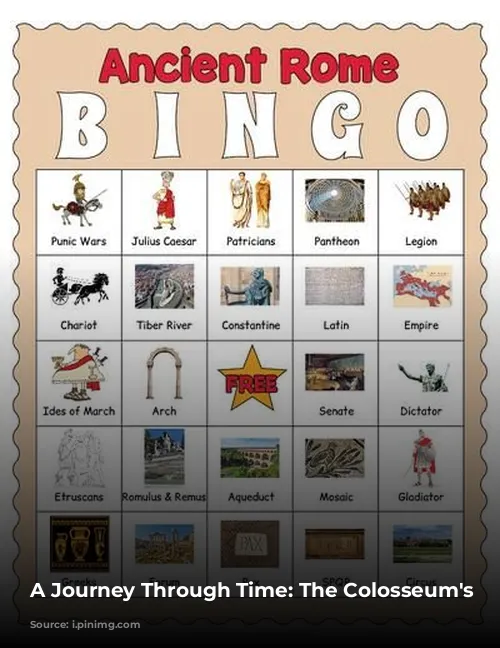Step back in time and discover the grandeur of the Colosseum, Rome’s iconic symbol, a testament to the power and ingenuity of the Roman Empire. The Colosseum, once known as the Flavian Amphitheatre, is a masterpiece of architecture that has captivated generations. Its history is as rich and vibrant as the spectacles it once hosted.
From Construction to Glory: The Colosseum Takes Shape
The Colosseum’s journey began in 72 AD under the rule of Emperor Vespasian, a testament to the ambition of the Roman Empire. Construction continued under the reign of Emperor Titus, and in 80 AD, the mighty arena was finally complete. The Colosseum, measuring a staggering 188 meters long, 156 meters wide, and 57 meters high, became the largest Roman amphitheater, a symbol of Rome’s might and grandeur.
The Colosseum: A Stage for Spectacle and Entertainment
Imagine a bustling city, filled with the roar of the crowd, the scent of exotic animals, and the thrill of gladiatorial combat. The Colosseum was more than just a building; it was a stage for the lives and deaths of many. Under the Roman Empire’s motto of “Bread and Circuses,” the Colosseum hosted thrilling gladiatorial contests, exotic animal exhibits, and even dramatic re-enactments of battles. These spectacles captivated Romans for centuries, offering a much-needed escape from the daily grind.
The Colosseum: From Glory to Decline
Time, however, has a way of leaving its mark on even the most magnificent structures. The Colosseum’s reign as a vibrant entertainment hub lasted for over 500 years, fading into silence in the 6th century AD. After its last recorded games, the Colosseum fell prey to the ravages of time, enduring looting, earthquakes, and even the horrors of World War II bombings. Yet, even in its decline, the Colosseum served other purposes, becoming a storehouse, a church, a cemetery, and even a castle for nobility.
The Colosseum Today: A Timeless Treasure
The Colosseum, despite its trials, has endured, standing as a testament to the resilience of the human spirit and the enduring power of history. It is now a UNESCO World Heritage Site and one of the most popular tourist destinations in the world. Each year, millions of visitors flock to see this iconic monument, marveling at its grandeur and its rich history.
Beyond the Walls: Exploring the Colosseum’s Secrets
The Colosseum holds many secrets, whispered through the ages. For example, did you know that the Colosseum originally had a canvas ceiling to protect spectators from the sun? Or that the machinery and cages for the animals were located beneath the arena floor? Even today, experts continue to uncover hidden treasures within the Colosseum’s walls, adding to its mystique and intrigue.
The Colosseum: A Living Symbol
The Colosseum is more than just a relic of the past; it is a living symbol of Rome’s legacy. Even today, the Colosseum serves as a stage for important events, such as the Way of the Cross procession led by the Pope every Good Friday. This procession honors the memory of the early Christians who died in the arena, reminding us of the Colosseum’s complex history and its enduring spiritual significance.
Visiting the Colosseum: Tips for Your Journey
If you’re planning a trip to Rome, a visit to the Colosseum is a must. To avoid the long lines, consider arriving early in the morning, buying an entrance ticket to the Palatine Hill, or purchasing the Roma Pass. For a deeper understanding of the Colosseum’s history and significance, consider taking a guided tour. These tours, which often include visits to the Roman Forum and Palatine Hill, offer a unique and enriching experience.
The Colosseum is a timeless treasure, a monument to human ingenuity, and a window into the past. A visit to this iconic landmark is sure to leave a lasting impression, reminding you of the power of history and the enduring legacy of the Roman Empire.
